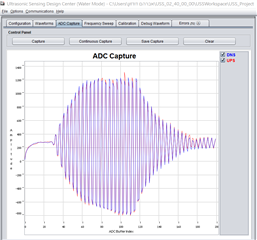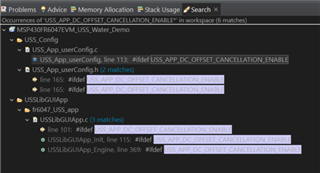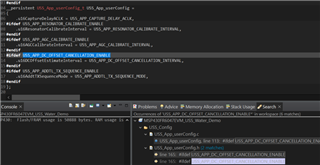Hi!
I get this signal.
I have a deviation towards the positive side.
I can't find a parameter in the GUI that allows to adjust the deviation, I asked you before and you told me to look for a parameter: USS_APP_DC_OFFSET_CANCELLATION_TABLE
But it is not in the sample code.
I would appreciate it if you could help me correct this deviation.
I'm just pointing out that there is no set-up problem on the pipe





